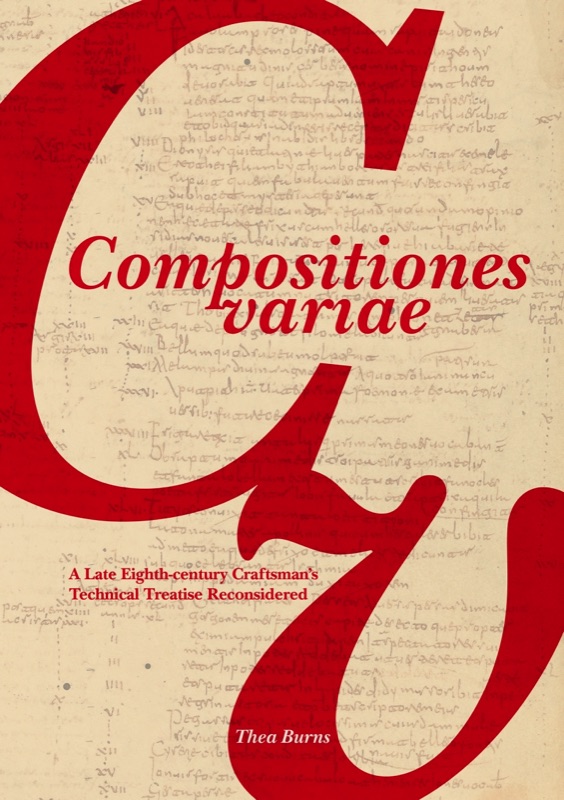The 'Compositiones variae' is the earliest extant medieval collection of artisanal recipes. Translated into Latin from a Hellenistic source and copied at Lucca, it is said to preserve technical knowledge surviving in Tuscany around 800 CE and to have offered practical assistance to the Lucca scriptorium.
The recipes are today bound together with numerous early medieval historical and liturgical texts in a massive compendium, Lucca, Biblioteca Capitolare ‘Feliniana’, Cod. 490. The scripts and textual contents of the compendium have been intensively studied but the volume’s physical and material features have been largely ignored. This publication demonstrates that as much meaningful data is embedded in the manuscript’s materials and structure as in the words on the page. The significance of the 'Compositiones variae' appears when its context is reconstructed, using evidence supplied by the early medieval Lucchese setting and numerous texts. An investigation of functional relationships - production, uses, practices and preservation - what the object's materiality represents, reveals the 'Compositiones variae' as a social product placed within the cultural and social history of medieval knowledge and power.
Thea Burns is an independent scholar living in Canada and is Adjunct Professor, Department of Art History and Art Conservation, Queen’s University, Kingston, Ontario.
For a look inside click here.
Contents
Acknowledgements
The Compositiones variae: introduction to historical and contemporary approaches
Date and origin
Source(s) of the recipes
Methodological considerations
This book Ch.1. Material and technical description of Lucca, Biblioteca Capitolare Feliniana, Cod.490
Introduction
The parchment Quire structure
Preparing the parchment for writing: pricking & ruling
Binding
Foliation
Boards
Quire signatures
Fly leaves & pastedowns
Evidence of earlier restoration campaigns
Leather covering
Clasps
Placement of writing block on the page & description of inks
Condition
Ch.2. The historical context of the Compositiones variae
Lucca: its significance as a centre introduction
Roman & late antique Lucca
Lombard Lucca
Roman & other roads
The pilgrimage
Early Carolingian Lucca
The cathedral library
Terminology: 'scuola cantorum', clerical or cathedral schools, scribal and chancery schools, scriptoria', workshops
Conclusion
Ch.3. The textual format of Lucca, Bib. Cap. 'Feliniana', Cod.490
Survival of classical technical literature
Formats of ancient & medieval manuscripts
'Oh, how burdensome is script!'
The Lucca compendium: a paradigm shift? a new codex form?
Compendia
Libelli (booklets): fabrication of Cod.490
Format history: a hypothesis
Ch.4. The content of the Compostiones variae unit
Introduction
Early modern interest in the Compositiones variae
Compositiones variae: 'recipes'
Character of the 'recipes'
1. Descriptive entries
2. Incomplete instructions
3. Fuller instructions
4. Recipe series
Quires 29 and 28
Folio 211 verso
The relationship of Compositiones variae and Mappae Clavicula 'recipes'
Ch.5: Artistic, artisanal and architectural context for the reception of the Compositiones variae at Lucca 'Art' in Lombardy
Clerical interest in the Compositiones variae in late eighth-century Lucca
The 'Good Shepherd' miniature
The broader context
Appendix 1: Contents of Lucca, Bibl. Cap. Feliniana, Codex 490
Appendix 2: List of detailed physical characteristics of the text block of Lucca, Bibl.
Cap. Feliniana, Codex 490
Bibliography
Lists of illustrations by chapter with captions
Index
Burns's work offers a simple, but at the same time fascinating, work hypothesis.
Letteraturaartistica - April 2017 click here
